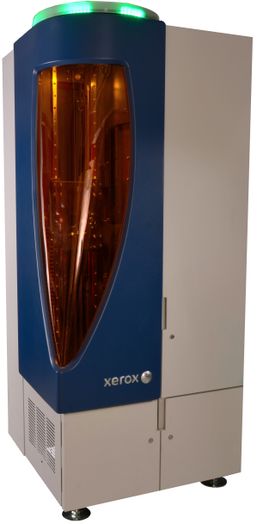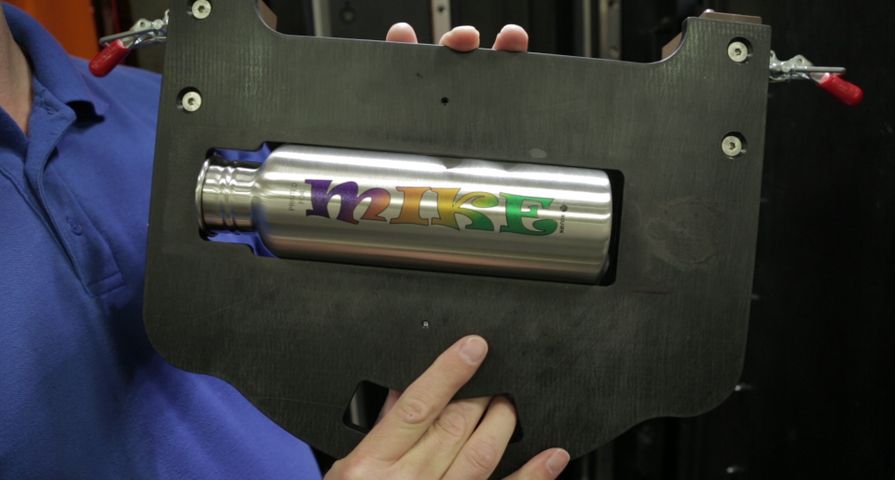The 3D printing industry is constantly accelerating in terms of technological advancement meaning former limitations with the process are being overcome. One such limitation that may become eradicated is the inability of 3D printers to print on uneven or perhaps even unknown surfaces. While generally the industry is focused on improving the 3D printing process on flatbed surfaces, the opportunities that new advancements into uneven surfaces could bring means it is a worthwhile area of research. At the moment Xerox are approaching printing onto 3D objects, with their new machine pictured below, and it seems that HP might also be interested in this idea.

The Xerox solution
There is a desire to print onto already formed 3D objects and this is something that Xerox have been developing. However, their proposition, the Xerox Direct to Object Inkjet Printer has only successfully printed using ink in order to create 2D designs on a 3D object, rather than 3D printing onto an uneven 3D surface. Furthermore, although an impressive machine, the 3D objects that are being printed on must also be smooth and even.

An example of the design the Xerox printer is able to produce. Image via Xerox.
The research paper
In relation to this from Xerox, a paper recently published by Loughborough University explores the concept of 3D printing on uneven, and even unknown, surfaces. The paper is written by professors from Portsmouth University in collaboration with Hewlett Packard Labs’ Susanne Klein, and it researches this problem as well as identifying a solution. The paper outlines a possible solution which would combine 3D scanning, multiple axis 3D printing, and also conformal printing in order to produce an affordable desktop system that could print onto unknown objects.
The solution
The process, according to the paper, should take the following steps:
(1) Place and fasten an unknown object into a 3D printer.(2) Scan the unknown object.(3) Extract point cloud data.(4) Superimpose the point cloud data with a to-be-printed new object.(5) Generate the toolpaths for the 3D printer.(6) Print the new object on top of the previously unknown object.
Significance
Such a system would have a variety of possible applications such as repairing existing structures, customizing or altering objects and even modifying prosthetics for example. So there is definitely a need or purpose for such a device. Furthermore, as the use of 3D printing increases in popularity, the desire to be able to 3D print onto 3D objects is only going to strengthen. For the time being, as the paper states, ‘there is currently no solution for conformal printing onto unknown uneven surfaces or 3D objects’. However the prototype created by this team might soon change this.
The prototype is able to scan an unknown object to gather point cloud data, superimpose the data with the object to be created on top, generate a tool path, and print the first layer of the new object onto the existing object.
Unfortunately, the method has not been cracked just yet. While, as the paper concludes, it “is theoretically feasible because all required technologies are available, it is a challenge to compose an affordable system that combines all involved elements.” The paper is by means of a report on the developments, and in short, the project has not been completed just yet. Nevertheless, it seems merely a matter of time before the combination of technologies are perfected and able to be encompassed in an affordable desktop machine.
The full paper is available here.
Featured image of HP logo. Image via HP



